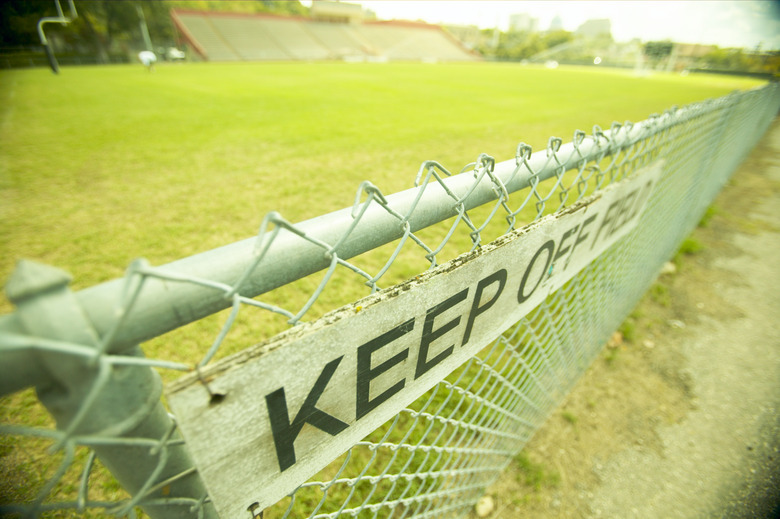How To Build A Fence Above A Septic Tank
Things Needed
-
Steel or wooden pole — 4 feet long, 0.5 inch diameter
-
Wooden boundary markers — 2 feet long, 0.5 inch diameter
-
Heavy-duty string — 1/8-inch diameter
-
Steel T-posts — 8 feet long, 4 to 6 inches diameter
-
Post driver
-
Welded wire or chain wire fencing — up to 5 feet high
-
Fence wire or T-post clips
-
Pliers
-
Gates, if required
Tip
Determine the height of the fence based on local ordinances, and acquire any necessary permits from the local council.
Prod gently with the steel pole when locating the drainfield boundary, to avoid rupturing the underground pipework.
Avoid walking over the septic tank cover.
Warning
If the drainfield is very deep, the drainage lines may not be visible at the surface.
A septic tank is a part of an underground sewage treatment and disposal system for households in isolated areas. Wastewater flows into the tank — where it separates into sludge that falls to the bottom, scum that rises to the top and a liquid in between. The liquid effluent passes through perforated underground pipes laid in gravel-filled trenches and is absorbed into the soil. The underground piping area is the drainfield, and fencing built around a septic tank must include this area. Fences are needed to stop humans or animals from walking over and damaging the septic tank cover and drainfield.
Step 1
Locate the septic tank cover and the drainfield. The tank cover is around 2.5 feet in diameter, and the drainage lines are about 4 inches in diameter — buried 6 feet and extending 100 feet from the tank. There may be between three and six lines, spaced 6 feet apart. Examine any plans for your property where the field and drainage lines may be located, or request records of such plans from the local authorities.
Step 2
Examine the grass cover over your property, if no design plans for the house and land are available, to locate the area. Grass covering the drainage lines will be greener and damper than the surrounding areas, due to effluent liquids and associated nutrients flowing into the soil. Use a thin steel pole to prod carefully into the ground around the borders of the drainfield, to determine the boundary of effluent flow underground.
Step 3
Identify the replacement area. Many local regulations in the United States require that households served by septic systems designate a suitable area for a new drainfield, should the existing one fail. This area must be protected the same way as the existing drainfield, with your fencing.
Step 4
Mark out the location of the fence, with wooden stakes and string, starting from a point 10 feet away from the center of the tank cover. Continue to mark the fence position 10 feet away from the periphery of the drainfield and replacement field, ending at another point 10 feet away from the center of the tank cover.
Step 5
Mark out a gate area between the two ends of the fence — remaining at least 10 feet away from the center of the tank cover. This area provides access for vehicles used in annual sludge clearance and tank cleaning.
Step 6
Use the post driver to hammer the T-posts 2 feet into the ground. Place one T-post every 10 feet around the marked fence area. Unroll the fencing and attach it to the T-posts with the fence wire — or with T-post clips made especially for this purpose — around the marked periphery. Attach the wire or clips at the top, middle and bottom of the fencing mesh, using pliers.
Step 7
Continue fencing across the gate area, if the space is to be used only for tank clearance. Install gates, if you need more frequent access.
